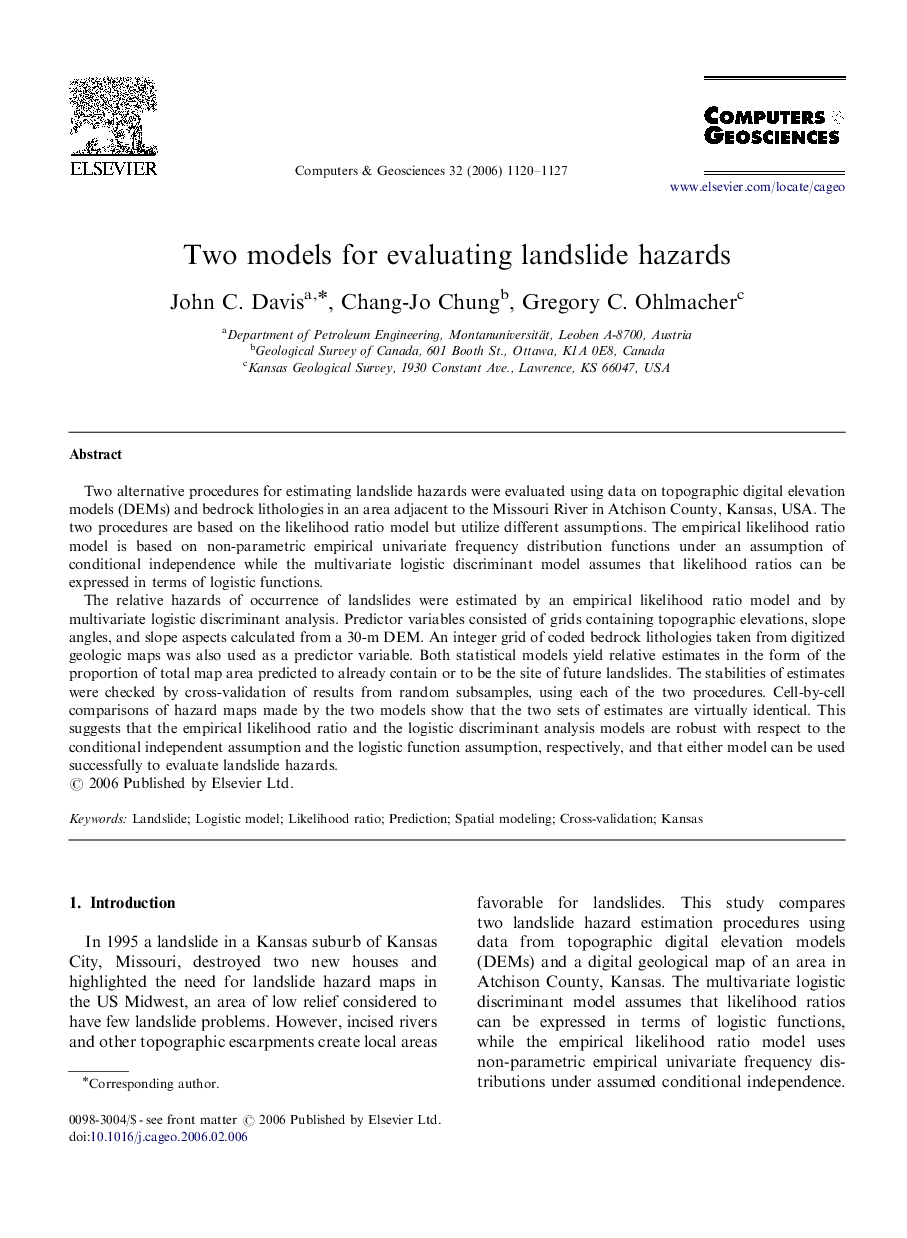| Article ID | Journal | Published Year | Pages | File Type |
|---|---|---|---|---|
| 508484 | Computers & Geosciences | 2006 | 8 Pages |
Two alternative procedures for estimating landslide hazards were evaluated using data on topographic digital elevation models (DEMs) and bedrock lithologies in an area adjacent to the Missouri River in Atchison County, Kansas, USA. The two procedures are based on the likelihood ratio model but utilize different assumptions. The empirical likelihood ratio model is based on non-parametric empirical univariate frequency distribution functions under an assumption of conditional independence while the multivariate logistic discriminant model assumes that likelihood ratios can be expressed in terms of logistic functions.The relative hazards of occurrence of landslides were estimated by an empirical likelihood ratio model and by multivariate logistic discriminant analysis. Predictor variables consisted of grids containing topographic elevations, slope angles, and slope aspects calculated from a 30-m DEM. An integer grid of coded bedrock lithologies taken from digitized geologic maps was also used as a predictor variable. Both statistical models yield relative estimates in the form of the proportion of total map area predicted to already contain or to be the site of future landslides. The stabilities of estimates were checked by cross-validation of results from random subsamples, using each of the two procedures. Cell-by-cell comparisons of hazard maps made by the two models show that the two sets of estimates are virtually identical. This suggests that the empirical likelihood ratio and the logistic discriminant analysis models are robust with respect to the conditional independent assumption and the logistic function assumption, respectively, and that either model can be used successfully to evaluate landslide hazards.
